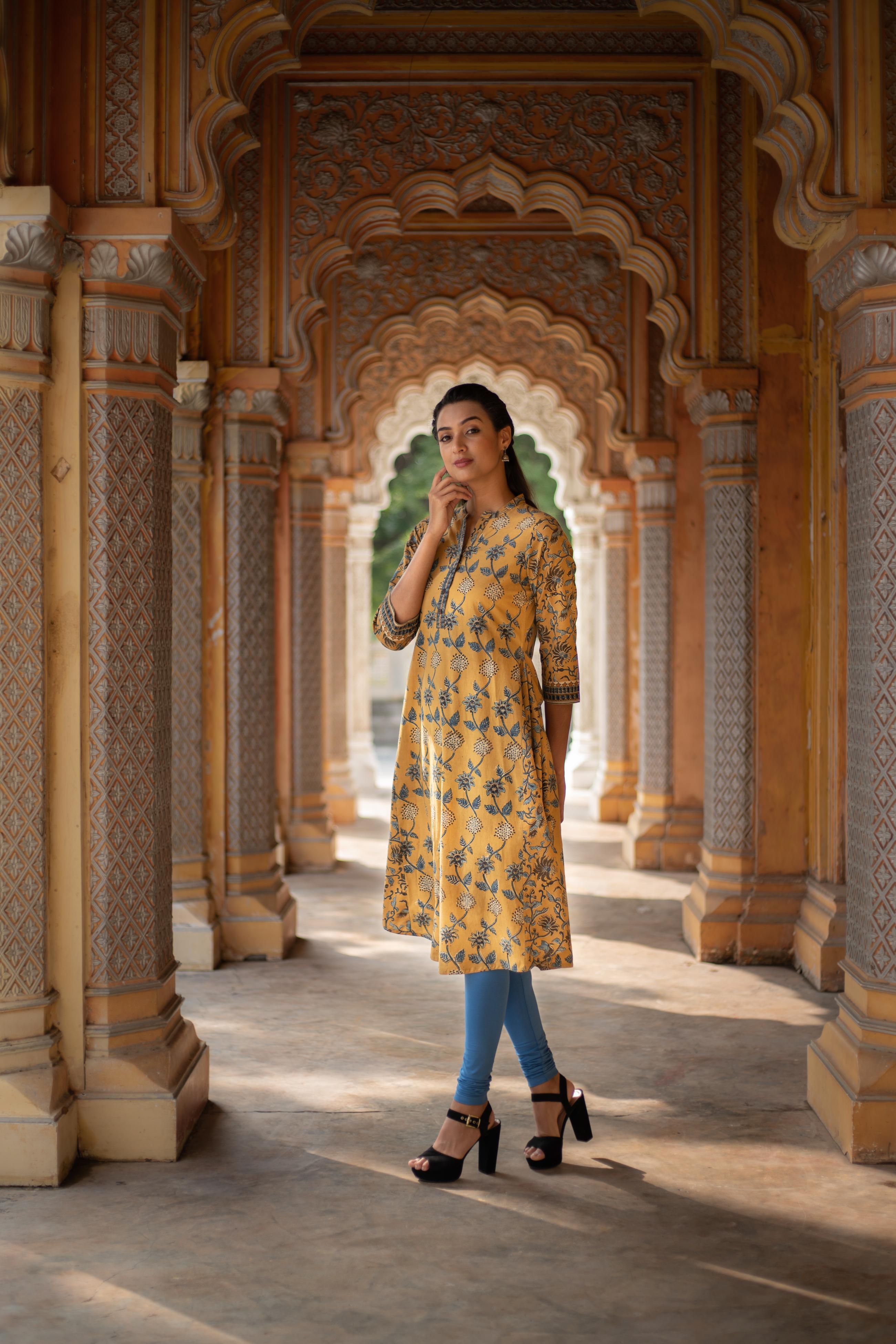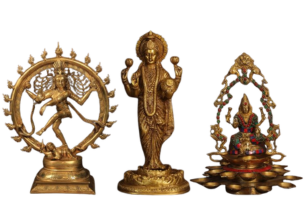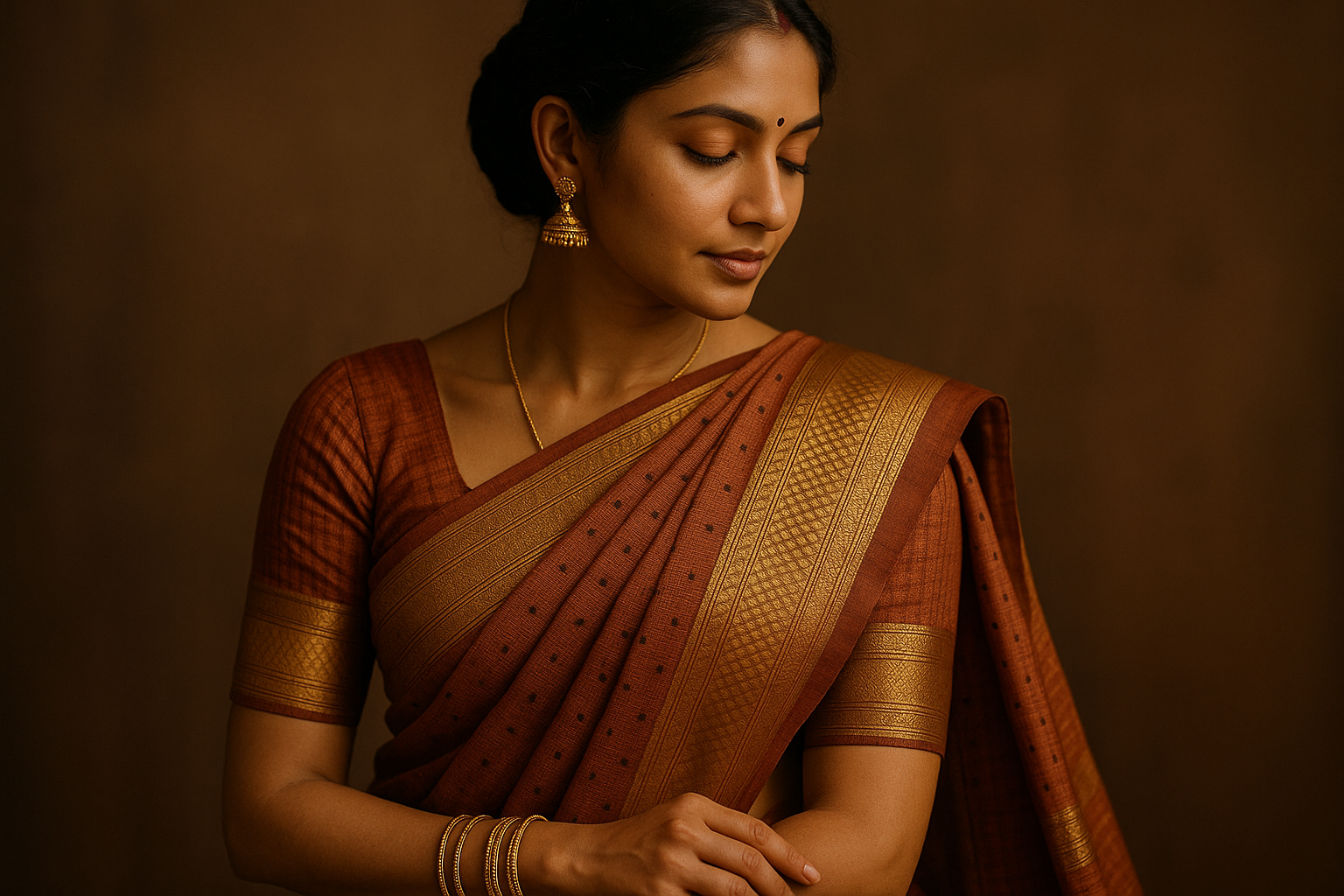Painting with Threads: The Kalamkari Journey at Kalanjali
‘Kalamkari’, an ancient that reveals the beauty of art through the work of hand, it is extraordinarily shown on the elegant cotton fabrics designed by the weavers. The term itself is a creative combination of two words, taken from a distinctive Indian language, Hindi. The term ‘Kalam’ means pen or hand and ‘Kari’ means work. Thus, the meaning of these simple words together, truly reveal the actual meaning of the intricate work produced by the craftsmen. Kalamkari is a hand painted or a block printed cotton textile. This work is famously produced in Andhra Pradesh and Telangana, the center-south area of the Indian Subcontinent.
What's the story behind this art form?
It is said that during the 13th-19th Century, Andhra Pradesh witnessed a rise of moving artists. Who were these artists? These artists comprised of singers, musicians and painters. They were called Chitrakattis. What did the Chitrakattis do? They went around from village to village, sharing the stories found in Hindu Mythology, in the form of street plays. They soon came up with an idea of painting a canvas in the spot, where they performed to enhance the understanding of the viewers. They painted it with natural dyes extracted from plants. This was how the art of Kalamkari was introduced in India. This art form soon gained prominence and witnessed that numerous temples had panels of Kalamkari art, illustrating the stories of mythology. This work is often even claimed to be similar to the art form in Odisha, Pattachitra, wherein they paint mythological characters on cloth. This art form flourished during the reign of the Sultan of Golconda in Hyderabad. These Mughal rulers of the Golconda and Coromandel regions appreciated the art form and called its skilled craftsmen “ Qualamkars”.
Different styles of Kalamkari:
The popular centers for the Kalamkari work are Srikalahasti and Machilipatnam. These places are known after their exclusive style of Kalamkari. Both these styles follow the same process of Kalamkari paintings. The Machilipatnam style involves the technique of block painting whereas The Srikalahasti style is a little complicated as it is completely the work of hand, from drawing the outline to filling in colours.
Kalamkari work on clothing:
As we know, Kalamkari work is famous for its natural dyes and for the art created by hand. The technique used involve dyeing, immersing, drying, scraping the wax off, soaking etc. The clothes are filled with natural vibrant colours like red, green, yellow etc. These colours are obtained by extracting colour from the nature i.e from the roots, leaves, mineral salts and seeds.The motifs used on the clothing are mostly related to the great epics and scenes from Mahabharata and Ramayana, Mythological figures etc. These motifs and designs are outlined with bamboos or date palm sticks.









